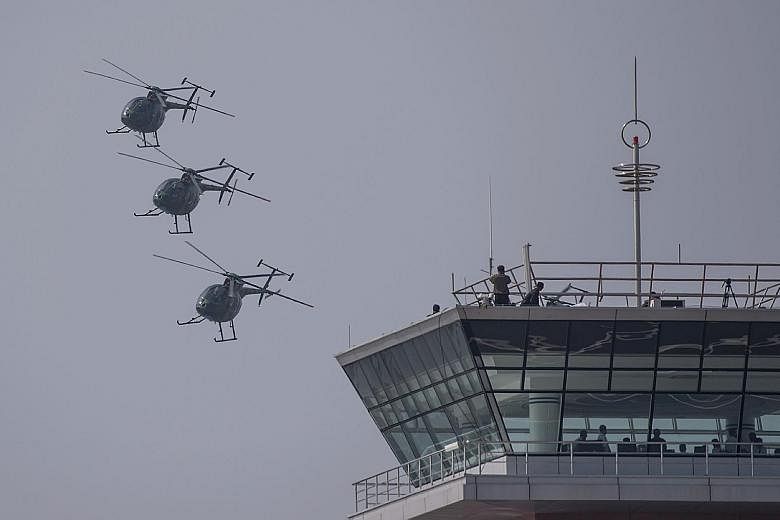WONSAN (North Korea) • Just weeks after carrying out its fifth nuclear test, North Korea put on an unprecedented display of its civilian and military air force at the country's first public aviation show.
The two-day Wonsan International Friendship Air Festival was launched yesterday at the newly refurbished Kalma Airport - previously a military airfield - completed last year to boost tourism in the area around the eastern port city of Wonsan.
The festival was already scheduled before North Korea conducted its fifth nuclear test on Sept 9, triggering international outrage and threats of further sanctions against the deeply isolated nuclear- armed country.
The show kicked off with an aerial display by US Hughes MD-500 military helicopters - among a number acquired in the 1980s by using a third country to circumvent US export restrictions.
North Korea's aviation industry was targeted by provisions in the United Nations Security Council resolution passed after Pyongyang's fourth nuclear test on Jan 6.
The provisions prevent member states from selling or supplying North Korea with aviation fuel, aviation petrol or naptha-type jet fuel or kerosene-type jet fuel.
But a recent report by the Nautilus Institute for Security concluded that domestic supply of jet fuel was probably adequate to keep air force aircraft flying, especially given their very low annual exercise rate.
The Hughes helicopters were followed by an extended solo acrobatic display by the most advanced aircraft in the North Korean air force - an early-model, Soviet-built Mikoyan MiG-29 Fulcrum, which made several ear-splitting low passes over the crowd.
The rest of the air force fleet largely comprises antiquated China-built copies of the MiG-17, MiG-19 and MiG-21. Experts say the low number of flying hours and training that North Korea's pilots get compounds the air force's technical deficit compared to neighbouring South Korea.
North Korean airports are generally high-security areas, but the Kalma tarmac and airfield were opened for the festival to several thousand local spectators, foreign media representatives and several hundred slightly over-excited aviation enthusiasts from 20 countries.
A crowd highlight was a formation display of two Soviet-era MiG-21s piloted by North Korea's first two female jet fighter pilots.
Several foreign observers noted that the low passes by the MiG29 and later by a Sukhoi-25 fighter would have been forbidden at other international air festivals.
"You would never see that anywhere else in the world. Regulations prevent any passes or manoeuvres over the crowd line," said Mr Peter Terlouw, a Dutch aviation photographer.
"But for us, it's brilliant!"
AGENCE FRANCE-PRESSE

